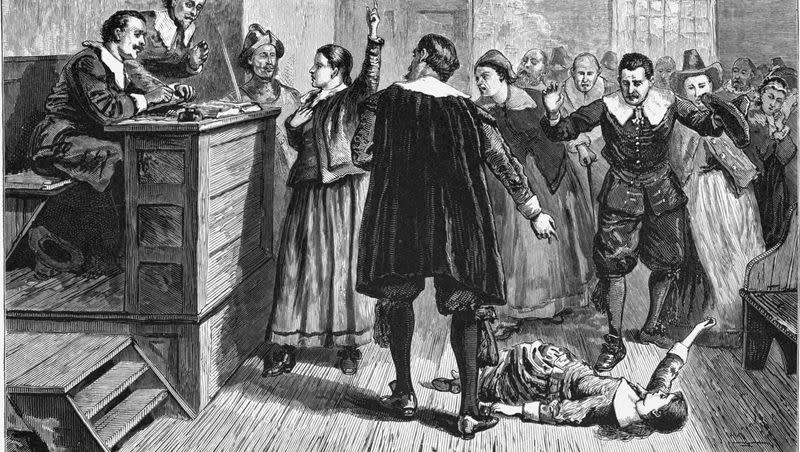A brief history of the Salem witch trials

The Salem witch trials took place in a period of New England history when women were accused of being witches.
These accusations were deadly in some cases. It wasn’t until 2022 that the last woman convicted of witchcraft during the Salem witch trials was exonerated. Elizabeth Johnson Jr. was given a death sentence when she was accused, per CNN, but the governor at the time prevented the sentence from being carried out.
Historians continue to investigate what happened during this period of time and try to understand the factors that led to these tragedies. Here’s a brief look at the history of the Salem witch trials.
Related
When did the Salem witch trials begin?
The Salem witch trials started in spring 1692, according to Britannica.
What were the Salem witch trials?
The Salem witch trials occurred in New England, centered around the town known now as Salem, Massachusetts. The trials took place well after the decline of early modern European witch trials, though those trials would have been on the minds of some in New England.
People, primarily women, were accused of witchcraft by fellow villagers and faced trials, jail time and execution. Over 200 people in the area were accused of witchcraft. Of the accused, 20 people were executed on accusations of witchcraft and five people died in prison, according to the Salem Witch Trials Documentary Archive.
The Salem witch trials began with a single accusation.
Tituba, an enslaved person, was accused of witchcraft by Elizabeth Parris and Abigail Williams. She denied hurting the girls, who said their erratic behavior was due to her witchcraft. Samuel Parris, her enslaver, beat her to get her to confess, according to History Channel.
She “confessed,” was put in prison and later, recanted. She said “that her Master did beat her and otherways abuse her, to make her confess and accuse” others of witchcraft, per Digital History. Alongside Tituba, Sarah Good and Sarah Osborne were both accused.
Both Good and Osborne were of low socioeconomic status. Both these women pleaded innocent, but they were still sent to prison.
Many of the women who were accused were “considered social outcasts,” according to New England Law Boston. Their lack of financial means made them vulnerable.
Accusations picked up across the region. Dorothy Good, the 4-year-old daughter of Sarah Good, was imprisoned because her “timid answers were construed as a confession,” according to Smithsonian Magazine.
Through 1693, accusations continued to circulate as people were found guilty, put in prison and executed.
How did the Salem witch trials end?
Massachusetts Bay Colony Gov. William Phips effectively ended the Salem witch trials after his wife was accused of witchcraft. He put an end to spectral evidence (i.e., supernatural evidence or claims from dreams, visions, etc.) after his wife was accused, per Britannica. Phips pardoned those who were in prison or facing accusation by May 1693, which marked the end of the trials.
Massachusetts apologized for the trials in 1957 and has exonerated those who were accused of witchcraft, per New England Law Boston.
Why were people accused of being witches?
Accusations were fueled by a variety of factors. Historians do not believe the people accused of witchcraft actually practiced witchcraft.
Many of the accused were “deprived of property and legal rights,” per Salem Witch Trials Documentary Archive.
Prejudice against gender and race, economic status, legal standings, personal quarrels, widespread economic hardship, hostility between neighbors, personal grievances and an outbreak of convulsive ergotism (no longer a popular theory) are some of the factors historians believe contributed to witchcraft accusations.
How many people were accused during the Salem witch trials?
Over 200 people were accused of witchcraft during the Salem witch trials.
How long did the Salem witch trials last?
The Salem witch trials lasted around a year from 1692 to 1693.

